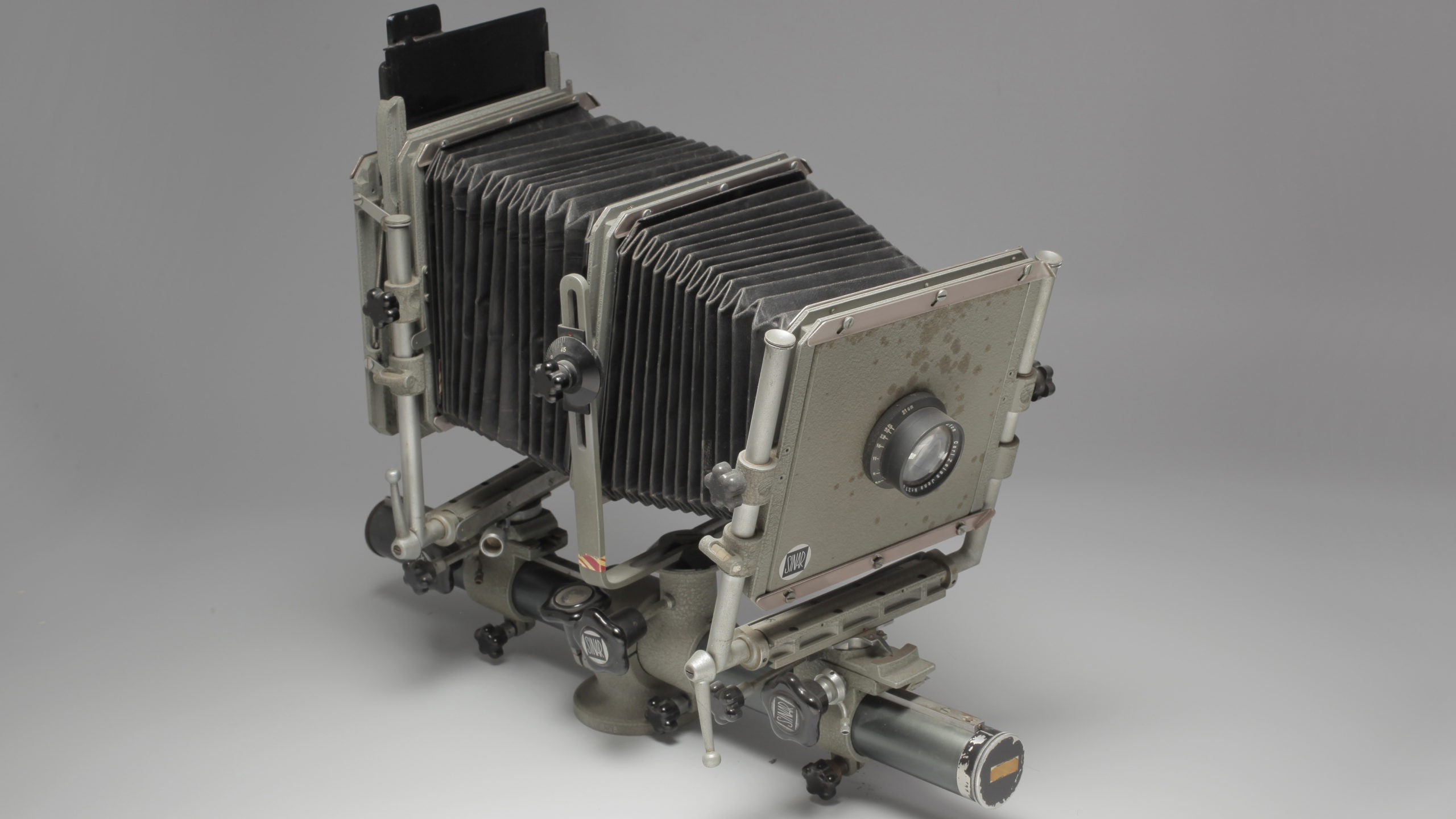The tools of the professional photographer
After the War, the professional photographer had a whole range of modern devices at his disposal, which met his various needs very well: reporting, architecture, advertisement images, fashion, portraits…
As early as the 1930s, the photographer had a new and very useful source of light at his disposal: the magnesium bulb flash. The bulb containing magnesium in wire form was sometimes coloured blue to emulate better the hue of daylight; it was single-use only, as it burned when activated and had to be replaced before taking another photograph.
Photojournalists’ favourite tools were being modernized: they had a wide variety of interchangeable optics, cameras that were getting lighter and lighter, and which were easy to use in all conditions. The improving small format reflex was rapidly becoming more popular thanks to its viewing system, which would soon replace the telemetric viewing camera.
For studio photographs or architectural shots, the photographer used an optical bench chamber, a device, which has forward and back bodies mounted on a bar along which they slide. This system, which uses large format sheet film, allows for great flexibility in terms of optical correction movements (tilt, swing and shift), and makes it possible to combine several components easily.
Another camera, which was very popular due to its versatility, was the Hasselblad, a medium-format reflex made in Sweden from 1948 and derived from an aerial photography device designed for military use. It is a modular system, in which components such as the lens, the film housing, the viewfinder and even the winding knob are interchangeable.


